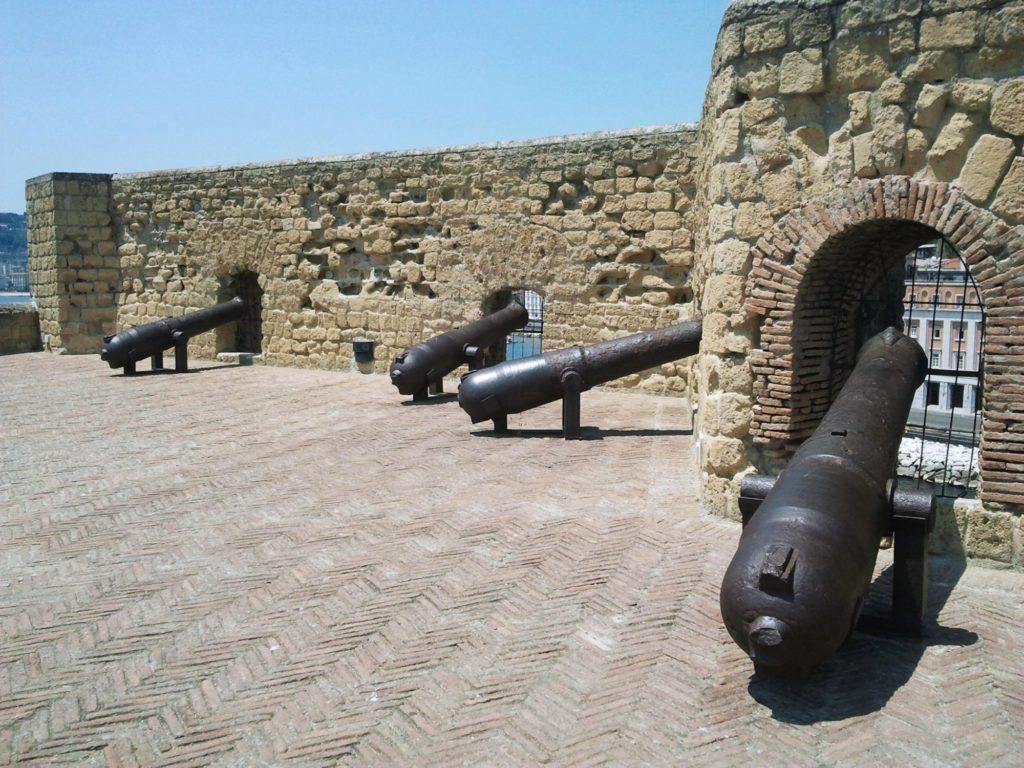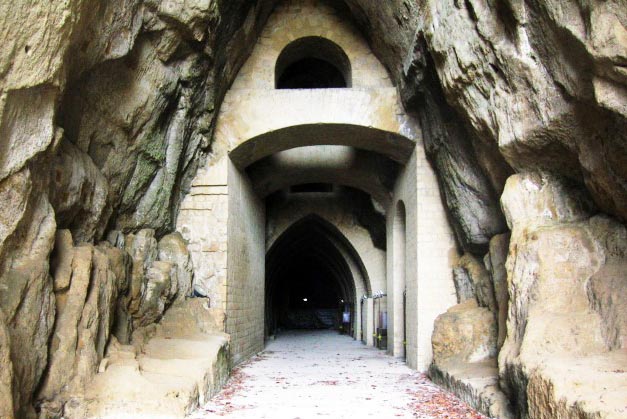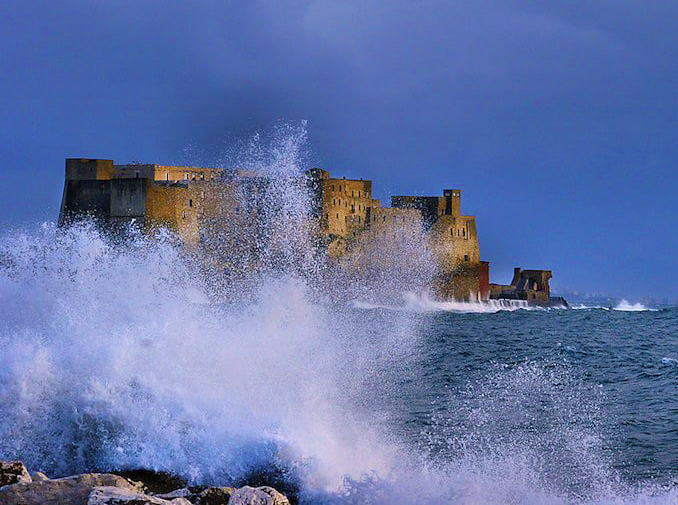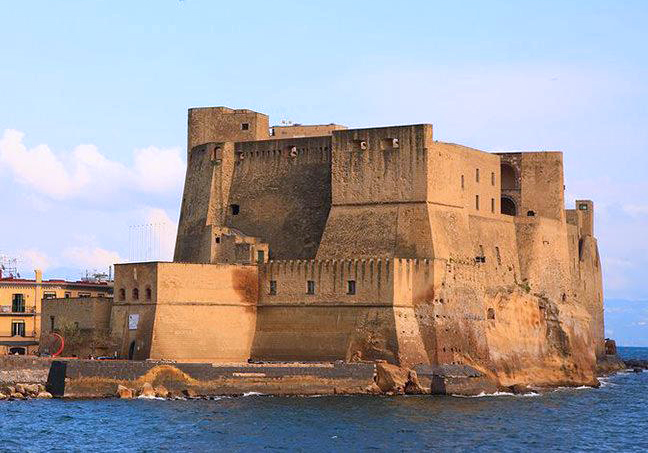In Naples, Castel dell’Ovo stands on the small island of Megaride, where the siren Parthenope of mythology is said to have been washed ashore. One of the oldest castles in the world, its name is linked to the legend of a magical egg, a tale that emerged during the Middle Ages. The egg was believed capable of protecting the city and its people from danger and disaster.
Virgil, the great Latin poet, acquired legendary status during the Medieval period. He was said to have placed a magical egg in a glass amphora filled with water, protected by a finely wrought iron cage. It was hung on a heavy oak beam in a secret room built expressly for the purpose in the bowels of the castle. The location was kept secret because the fate and fortune of Naples rested upon it remaining unbroken. As long as the egg remained intact, the city and the castle would have been protected against every sort of calamity, but if it were to break, disaster would strike.
In a letter from Chancellor Corrado di Querfurt, one of Holy Roman Emperor Arrigo VII’s chancellors, he recounts the miracles that the poet-magician Virgil performed, including safeguarding the city from volcanic eruptions. According to the document, written almost 14 centuries after his death, Virgil protected Naples by building a statue of a man with bow and arrow, poised, ready to fire and aimed at the mouth of the volcano. The remains of a Roman Villa in Marechiarois are still known as Virgil’s School, where the poet was said to have initiated his pupils in the arts of magic.
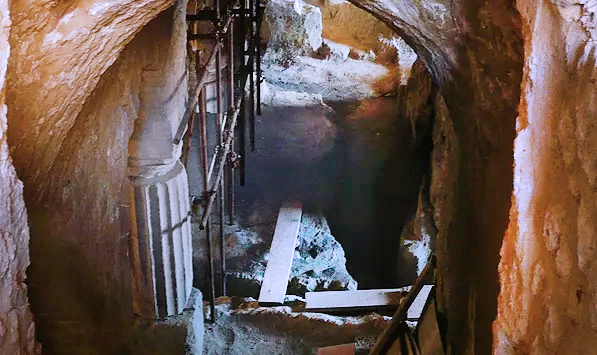
Another legend has it that the sorcerer and poet was able to carve out the Crypta Neapolitana, the long tunnel through the tufa in the Piedigrotta area, in the space of just one night. The objective was to create a transportation link between Naples and Pozzuoli and avoid the Campi Flegrei, whose gates led to the mythical land of lakes and burning volcanoes.
During the first century BC, the island of Megaride became part of the property purchased by the Roman patrician Lucio Licinio Lucullo. He built a villa called Castrum Lucullanum. It is believed that its grounds extended from Santa Lucia all the way down to the island of Megaride. It was on the island itself that Lucullo had part of his rich and extravagant villa built and the gardens covered the rest of the site.
It was Lucullo who was responsible for introducing fruit trees such as cherry and peach to the region. He imported them from Cerasunto and Persia from which the Neapolitan names cerase and persiche are derived. With the death of Lucullo and his son, the villa lost its importance until the Emperor Valentinian III decided to transform it into a fort in the fourth century AD. It was inside these walls that the deposed Romolus Augustolus, last Roman Emperor in the West, was imprisoned in 476, remaining in the castle until his death.
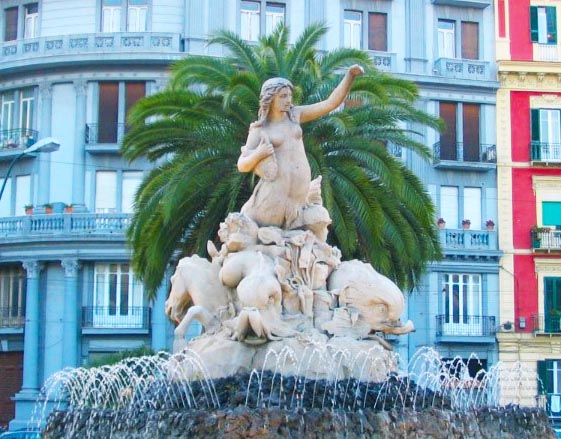
At the end of fifth century, a small community of monks from the order of Saint Basil settled there and built the Church of San Pietro. It was with Saint Patrizia in the mid-seventh century that the location assumed a heightened aura of holiness. A descendant of Constantine I, she was promised in marriage against her will and so fled from Constantinople in a small boat. Her intended destination was Rome, but a fierce storm left her shipwrecked at the island of Megaride, where the monks took her in. The monastery contained her relics until 1864, when they were transferred to the monastery of San Gregorio Armeno. Covered in wax, her relics were contained in a jewel-encrusted urn of gold and silver in the monastery’s chapel. The monastery also preserves her blood, which continues to liquefy on her feast day of August 25th, just like that of San Gennaro in Naples.
Women in History Month
The long history of the castle includes a natural disaster. In 1370, a violent tsunami rocked Castel dell’Ovo, causing serious damage and the collapse of its towers. Although the damage to the castle was immense, it was nothing compared to the panic that seized the population when rumors spread that the magical egg hidden by Virgil had broken. The Queen, Giovanna I d’Angevin, had to intervene reassuring her people that the towers would be rebuilt immediately and that the egg was safe and unbroken.
Over the following centuries, the castle remained in worthy condition, but in 1871, a plan was initiated to knock down the castle to make room for a new residential area. Although Castel dell’Ovo had survived the ravages of time and war, it appeared that it might disappear forever. Perhaps it was final stroke of Virgil’s magic, but at the 11th hour, the project was cancelled. Today the castle houses important exhibitions and is one of the city’s most popular tourist attractions.
